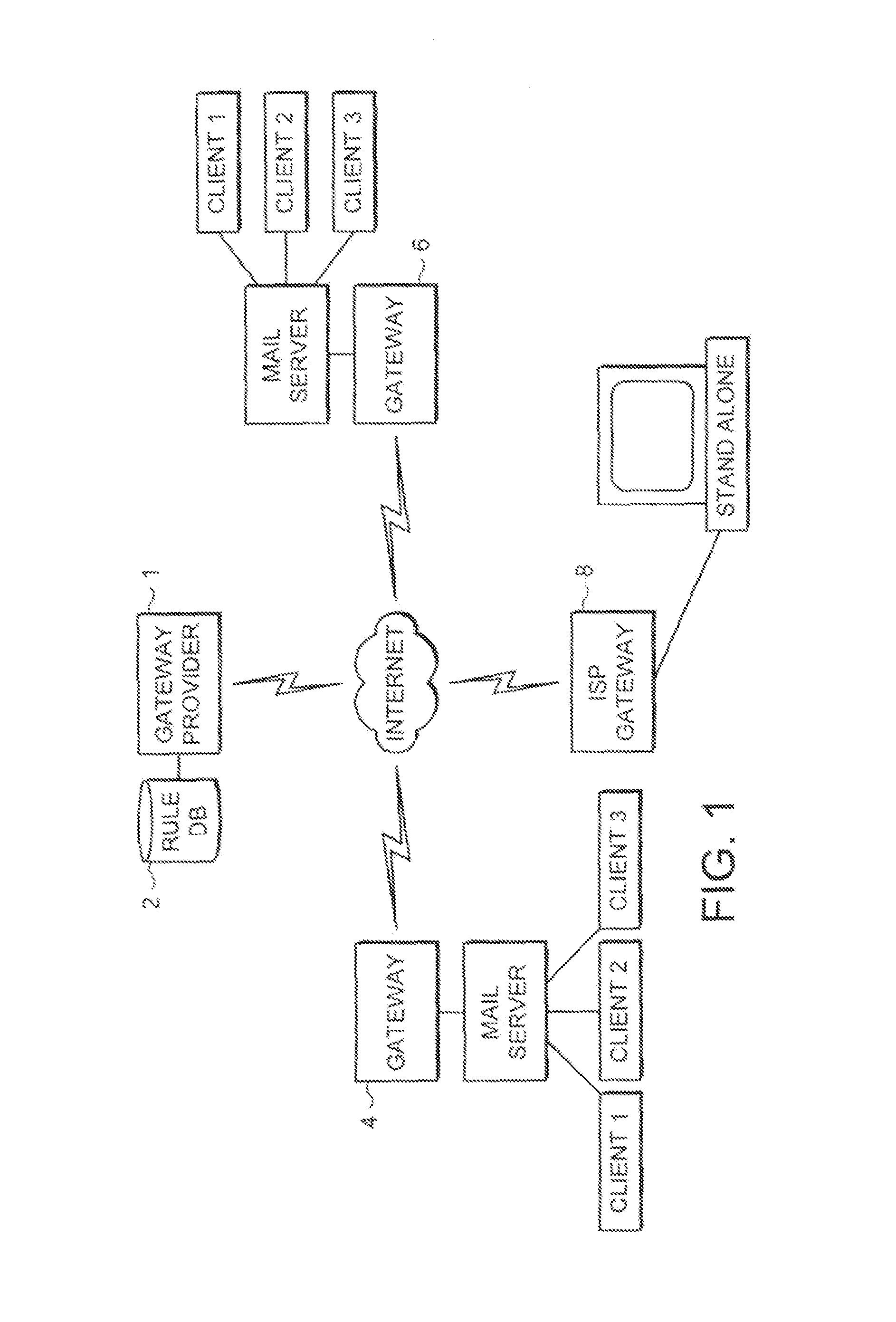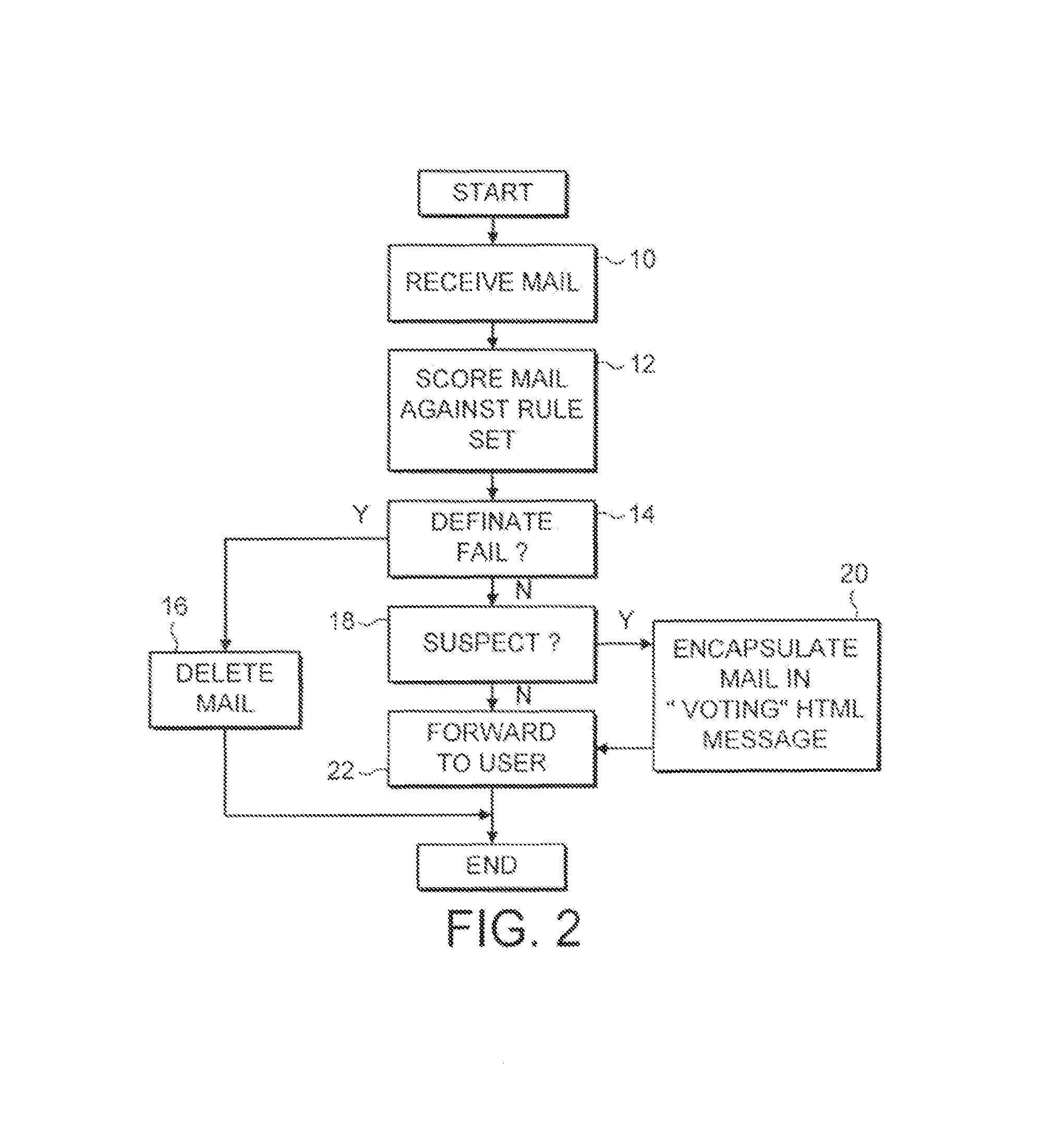Unwanted e-mail filtering system including voting feedback
a technology of e-mail filtering and voting feedback, applied in the field of data processing systems, can solve the problem that users may often be incorrect in their assessment of the nature of the problem, and achieve the effect of fast respons
- Summary
- Abstract
- Description
- Claims
- Application Information
AI Technical Summary
Benefits of technology
Problems solved by technology
Method used
Image
Examples
Embodiment Construction
[0033]FIG. 1 illustrates a plurality of e-mail users in the form of client computers connected via respective mail servers and gateways through the internet. A central provider 1 of the downloadable filter data uses an attached rule database 2 to generate filter data files that may be downloaded by individual connected gateway computers 4, 6, 8. These gateway computers apply the downloaded filter data specified tests to received e-mail messages prior to passing these along to their associated mail servers. The individual gateways 4, 6, 8 may also apply locally defined filtering rules specific to that particular organisation or user.
[0034]The rules specified in the rule database 2 may be of an algorithmic form rather than a less flexible direct regular expression form. A predetermined list of words identified as common within unwanted e-mail messages may be established. Words such as “buy”, “free”, “credit” and others have a relatively higher likelihood of occurrence within unwanted ...
PUM
 Login to View More
Login to View More Abstract
Description
Claims
Application Information
 Login to View More
Login to View More - R&D
- Intellectual Property
- Life Sciences
- Materials
- Tech Scout
- Unparalleled Data Quality
- Higher Quality Content
- 60% Fewer Hallucinations
Browse by: Latest US Patents, China's latest patents, Technical Efficacy Thesaurus, Application Domain, Technology Topic, Popular Technical Reports.
© 2025 PatSnap. All rights reserved.Legal|Privacy policy|Modern Slavery Act Transparency Statement|Sitemap|About US| Contact US: help@patsnap.com



